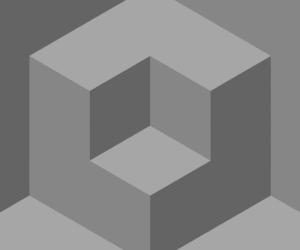Visual illusions have always captivated us, playing tricks on our perception and revealing the fascinating ways our brains interpret the world around us. Among the diverse range of illusions, "infinity" illusions stand out for their ability to create a sense of endlessness, depth, and impossible spaces. These illusions exploit the principles of perspective, repetition, and reflection to challenge our understanding of reality and leave us questioning what we see. So, what exactly are infinity visual illusions? In essence, they are images or designs that suggest a never-ending space or repetition, often by utilizing mirrors, repeating patterns, or cleverly drawn perspectives. The core principle is to create a visual loop, where the viewer's eye is drawn deeper and deeper into the image, perceiving a non-existent and limitless expanse.  One of the most common examples is the use of mirrors placed opposite each other. This simple setup creates an infinite tunnel of reflections, where the same image is repeated endlessly, diminishing in size as it stretches into the perceived distance. This effect can be seen in everything from barber shops to art installations. Beyond mirrors, infinity illusions can be created through purely artistic means. Artists use perspective techniques to draw staircases that never end, corridors that disappear into vanishing points, or Escher-esque structures that defy the laws of physics. These illustrations rely on our brain's inherent understanding of depth and perspective, manipulating these cues to create a sense of unending space. One of the most common examples is the use of mirrors placed opposite each other. This simple setup creates an infinite tunnel of reflections, where the same image is repeated endlessly, diminishing in size as it stretches into the perceived distance. This effect can be seen in everything from barber shops to art installations. Beyond mirrors, infinity illusions can be created through purely artistic means. Artists use perspective techniques to draw staircases that never end, corridors that disappear into vanishing points, or Escher-esque structures that defy the laws of physics. These illustrations rely on our brain's inherent understanding of depth and perspective, manipulating these cues to create a sense of unending space.
The appeal of infinity visual illusions lies in their ability to subvert our expectations. We are accustomed to seeing the world in a certain way, with finite boundaries and predictable dimensions. These illusions disrupt that understanding, offering a glimpse into a realm of impossible geometry and endless possibilities. Furthermore, these illusions are not just captivating, but also offer insights into how our brains process visual information. By studying how our perception is tricked, researchers can gain a better understanding of the complex mechanisms involved in visual processing, depth perception, and spatial awareness. Whether it's a mirrored hallway or a meticulously drawn impossible staircase, infinity visual illusions offer a fascinating journey into the limits of perception. They remind us that what we see is not always what is, and that the world around us is often more complex and mysterious than we might imagine. So, the next time you encounter an infinity illusion, take a moment to appreciate the ingenuity of the design and the power of the human brain to be both fooled and fascinated. |

